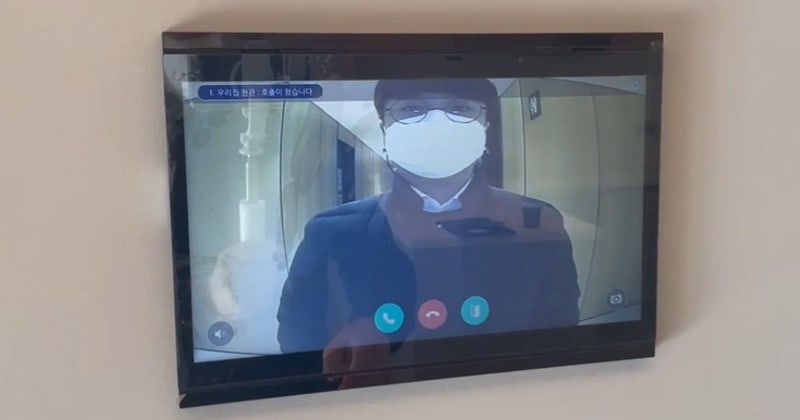
Venmo,
quick
and
convenient.
A
great
way
to
pay
back
a
friend
or
split
the
cost
of
a
meal.
Yet
its
ease
of
use
and
popularity
has
made
it
a
hunting
ground
for
scammers.
Venmo
scams
come
in
all
shapes,
and
many
of
them
look
like
variations
of
email
phishing
and
text
scams.
The
scammers
behind
them
will
pose
as
Venmo
customer
service
reps
who
ask
for
your
login
credential.
Other
scammers
offer
bogus
cash
prizes
and
pyramid
schemes
that
lure
in
victims
with
the
promise
of
quick
cash.
Some
scammers
will
use
the
app
itself
to
impersonate
friends
and
family
to
steal
money
from
you.
All
of
it
is
preventable.
Just
like
any
other
payment
app
out
there,
using
Venmo
safely
calls
for
a
few
precautions—and
for
knowing
the
tricks
that
scammers
like
to
pull.
The
basics
of
staying
safer
on
Venmo
Keep
your
transactions
private.
Venmo
has
a
social
component
that
can
display
a
transaction
between
two
people
and
allow
others
to
comment
on
it.
Payment
amounts
are
always
secret.
Yet
you
have
control
over
who
sees
what
by
adjusting
your
privacy
settings:
-
Public
–
Everyone
on
the
internet
can
see
and
comment
on
the
transaction. -
Friends
–
Only
your
Venmo
friends
and
the
other
participant’s
friends
can
see
and
comment
on
the
transaction.
(Note
that
the
friends
of
the
other
participant
might
be
strangers
to
you,
so
“friends
and
friends
of
friends”
is
more
accurate
here.) -
Private
–
Here,
only
the
participants
can
view
and
comment
on
the
transaction.
This
brings
up
the
question,
what
if
the
participants
in
the
transaction
have
different
privacy
settings?
Venmo
uses
the
most
restrictive
one.
So,
if
you’re
paying
someone
who
has
their
privacy
set
to
“Public”
and
you
have
yours
set
to
“Private,”
the
transaction
will
indeed
be
private.
We
suggest
going
private
with
your
account.
The
less
financial
information
you
share,
the
better.
You
can
set
your
transactions
to
private
by
heading
into
the
Settings
of
the
Venmo
app,
tapping
on
Privacy,
and
then
selecting
Private.
In
short,
just
because
something
is
designed
to
be
social
doesn’t
mean
it
should
become
a
treasure
trove
of
personal
data
about
your
spending
habits.
Add
extra
layers
of
security.
Take
extra
precautions
that
make
it
difficult
for
others
to
access
your
Venmo
app.
-
First
off,
lock
your
phone.
Whether
with
a
PIN
or
other
form
of
protection,
locking
your
phone
prevents
access
to
everything
you
keep
on
it—which
is
important
in
the
case
of
loss
or
theft.
Our
own
research
found
that
only
58%
of
adults
take
the
vital
step
of
locking
their
phones.
If
you
fall
into
the
42%
who
don’t,
strongly
consider
changing
that. -
Within
the
Venmo
app,
you
can
also
enable
Face
ID
and
a
PIN
(on
iOS)
or
a
PIN
and
biometric
unlock
(Android).
These
add
a
further
layer
of
security
by
asking
for
identification
each
time
you
open
the
app.
That
way,
even
if
someone
gets
access
to
your
phone,
they’ll
still
have
to
leap
that
security
hurdle
to
access
your
Venmo
app.
Pay
only
people
you
trust.
Per
Venmo,
the
app
was
originally
designed
for
people
who
know
and
trust
each
other
to
send
each
other
payments.
Since
then,
it’s
expanded
to
making
payments
for
goods
and
services
under
certain
circumstances.
In
Venmo’s
words:
“The
only
way
to
accept
payments
for
goods
and
services
on
Venmo
is
to
be
explicitly
authorized
to
accept
Venmo
for
purchases,
either
by
applying
for
a
business
profile
or
tag
a
payment
to
a
personal
profile
as
a
purchase.”
Venmo
further
clarifies
their
policy
by
stating
(emphasis
theirs):
“Unless
directly
given
the
option
by
Venmo,
DO
NOT
USE
VENMO
TO
TRANSACT
WITH
PEOPLE
YOU
DON’T
PERSONALLY
KNOW,
ESPECIALLY
IF
THE
TRANSACTION
INVOLVES
THE
PURCHASE
OR
SALE
OF
A
GOOD
OR
SERVICE
(for
example,
concert
tickets,
electronic
equipment,
sneakers,
a
watch,
or
other
merchandise).”
Purchases
that
don’t
follow
these
policies
open
you
up
to
risk.
That
includes
the
many
scammers
who
peddle
phony
goods,
ask
their
victims
to
pay
with
Venmo,
and
never
deliver
a
thing.
On
the
flip
side,
when
you
make
an
authorized
purchase
through
Venmo,
you
gain
the
benefits
of
their
protection
plan.
You
can
learn
more
about
it
on
their
protection
plan
site.
Venmo
scams
Venmo
has
a
dedicated
web
page
on
the
topic
of
scams,
and
lists
the
following
as
the
top
Venmo
scams
out
there:
|
|
Venmo
breaks
down
each
of
these
scams
in
detail
on
their
site.
They
further
share
things
you
can
do
to
avoid
them—or
steps
to
take
if
you
unfortunately
fall
victim
to
one
of
these
scams.
Broadly
speaking,
though,
you
can
take
several
steps
to
avoid
Venmo
scams:
1)
Never
share
private
details.
Scammers
will
often
pose
as
customer
service
reps
to
pump
information
out
of
their
victims.
They’ll
ask
for
things
like
bank
account
information,
debit
card
or
credit
card
numbers,
or
even
passwords
and
authentication
codes
sent
to
your
phone.
Never
share
this
information.
Legitimate
reps
from
legitimate
companies
won’t
request
it.
2)
Know
when
Venmo
might
ask
for
your
Social
Security
number.
In
the
U.S.,
Venmo
is
regulated
by
the
Treasury
Department.
As
such,
Venmo
might
require
your
SSN
in
certain
circumstances.
Venmo
details
the
cases
where
they
might
need
your
SSN
for
reporting,
here
on
their
website.
Note
that
this
is
an
exception
to
what
we
say
about
sharing
SSNs
and
tax
ID
numbers.
As
a
payment
app,
Venmo
might
have
legitimate
reasons
to
request
it.
However,
don’t
send
this
information
by
email
or
text
(any
email
or
text
that
asks
you
to
do
that
is
a
scam).
Instead,
always
use
the
mobile
app
by
going
to
Settings
then
Identity
Verification.
3)
Keep
an
eye
out
for
scam
emails
and
texts.
Venmo
always
sends
communications
through
their
official
“venmo.com”
domain
name.
If
you
receive
an
email
that
claims
to
be
from
Venmo
but
that
doesn’t
use
“venmo.com,”
it’s
a
scam.
Never
click
or
tap
on
links
in
emails
or
texts
supposedly
sent
by
Venmo.
4)
Be
suspicious
of
the
messages
you
get.
Imposters
are
afoot.
Another
broad
category
of
scams
includes
people
who
aren’t
who
they
say
they
are.
In
the
case
of
Venmo,
scammers
will
create
imposter
accounts
that
look
like
they
might
be
a
friend
or
family
member
but
aren’t.
If
you
receive
an
unexpected
and
likely
urgent-sounding
request
for
payment,
contact
that
person
outside
the
app.
See
if
it’s
really
them.
Keep
your
online
finances
yet
more
secure
with
the
right
tools
Online
protection
software
like
ours
offers
several
additional
layers
of
security
when
it
comes
to
your
safety
and
finances
online.
For
starters,
it
includes
web
browser
protection
that
can
block
malicious
and
questionable
links
that
might
lead
you
down
the
road
to
malware
or
a
phishing
scam—such
as
a
phony
Venmo
link
designed
to
steal
your
login
credentials.
It
also
includes
a
password
manager
that
creates
and
stores
strong,
unique
passwords
for
each
of
your
accounts.
Moreover,
it
further
protects
you
by
locking
down
your
identity
online.
Transaction
Monitoring
and
Credit
Monitoring
help
you
spot
any
questionable
financial
activity
quickly.
And
if
identity
theft
unfortunately
happens
to
you,
$1
ID
theft
coverage
&
restoration
can
help
you
recover
quickly.
In
all,
there’s
no
question
that
Venmo
makes
payments
quick
and
convenient.
You
can
make
them
far
more
secure
too.
The
right
precautions
and
tools
can
see
to
it.






